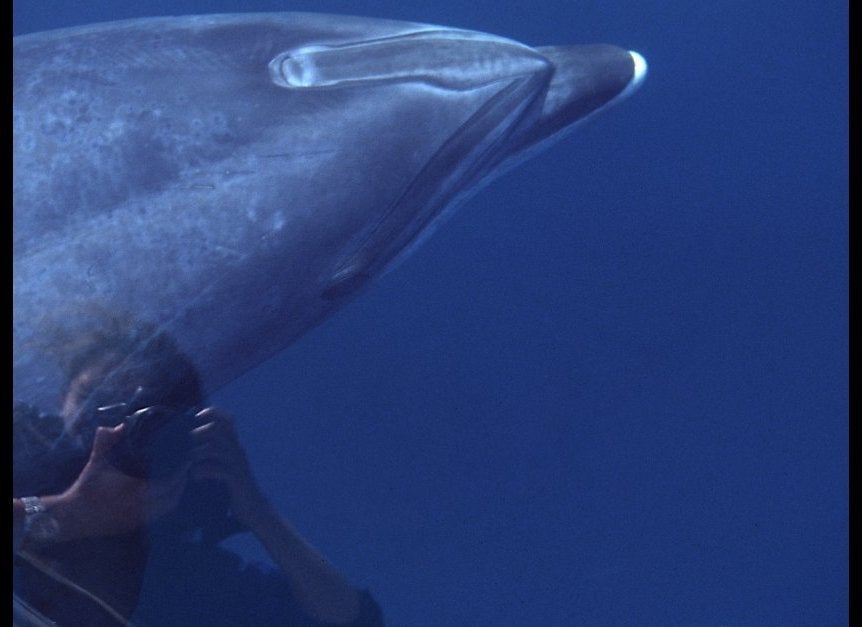Dolphins -- they're just like us.
According to a study recently published in the journal Marine Mammal Science, bottlenose dolphins cluster into unique social networks, similarly to how humans socialize.
While dolphins have been known to form communities based on kinship, food preferences and location within their habitat, the study shows that they also exhibit preferential and avoidance behaviors for dolphins that they like or don’t like.
Researchers led by Elizabeth Murdoch Titcomb, a research biologist at the Harbor Branch Oceanographic Institute at Florida Atlantic University, observed roughly 200 dolphins in the Indian River Lagoon (IRL), a biodiverse estuary on Florida’s east coast. Titcomb and her team spent over six years on their observations.
They looked for how the dolphins spent their time and with whom, and how the shape of their habitat affected their sociology.
The physical dimensions of the lagoon, for example, “influenced the spatial and temporal dynamics of dolphin association patterns," Titcomb said in a press release. She later elaborated to The Huffington Post, saying that where the lagoon was skinnier, dolphins were more socialized and better acquainted with each other, compared to those in more spacious parts of the estuary.
“It created a funneling effect,” she said. “Like they’re living in a smaller town, they know each other better.”
The study also observed how male dolphins form "coalitions," pairing off to be frequent companions and serve as each other's wingman. Two male dolphins will "hang out together a lot,” Titcomb said, hunting and feeding together and helping find each other mates. “A coalition can last 20 some-odd years," Titcomb said of the friendships.
Titcomb, who has studied skin diseases in dolphins for over a decade, said that her biggest concern is aiding conservation efforts. The study, she said, illuminates how the IRL bottlenose dolphin population is not just one big homogeneous group of roughly 1,000 animals. Rather, it's six separate cliques or communities of dolphins, each with its own key players.
Identifying key players within a clique, Titcomb said, is “interesting from an epidemiological perspective," since researchers can then see if diseases are spread more frequently from those individuals.
We can't help but picture a dolphin mean girl clique sitting at the popular reef and saying, "You can't swim with us."
Support HuffPost
Our 2024 Coverage Needs You
Your Loyalty Means The World To Us
At HuffPost, we believe that everyone needs high-quality journalism, but we understand that not everyone can afford to pay for expensive news subscriptions. That is why we are committed to providing deeply reported, carefully fact-checked news that is freely accessible to everyone.
Whether you come to HuffPost for updates on the 2024 presidential race, hard-hitting investigations into critical issues facing our country today, or trending stories that make you laugh, we appreciate you. The truth is, news costs money to produce, and we are proud that we have never put our stories behind an expensive paywall.
Would you join us to help keep our stories free for all? Your contribution of as little as $2 will go a long way.
Can't afford to donate? Support HuffPost by creating a free account and log in while you read.
As Americans head to the polls in 2024, the very future of our country is at stake. At HuffPost, we believe that a free press is critical to creating well-informed voters. That's why our journalism is free for everyone, even though other newsrooms retreat behind expensive paywalls.
Our journalists will continue to cover the twists and turns during this historic presidential election. With your help, we'll bring you hard-hitting investigations, well-researched analysis and timely takes you can't find elsewhere. Reporting in this current political climate is a responsibility we do not take lightly, and we thank you for your support.
Contribute as little as $2 to keep our news free for all.
Can't afford to donate? Support HuffPost by creating a free account and log in while you read.
Dear HuffPost Reader
Thank you for your past contribution to HuffPost. We are sincerely grateful for readers like you who help us ensure that we can keep our journalism free for everyone.
The stakes are high this year, and our 2024 coverage could use continued support. Would you consider becoming a regular HuffPost contributor?
Dear HuffPost Reader
Thank you for your past contribution to HuffPost. We are sincerely grateful for readers like you who help us ensure that we can keep our journalism free for everyone.
The stakes are high this year, and our 2024 coverage could use continued support. If circumstances have changed since you last contributed, we hope you’ll consider contributing to HuffPost once more.
Already contributed? Log in to hide these messages.


